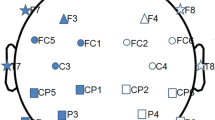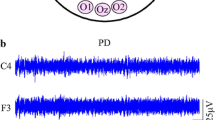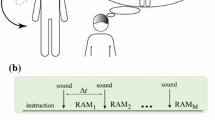Abstract.
EEGs were recorded from patients in early stages of Parkinson's disease (17 patients, 9 females) and healthy controls (12 subjects, 8 females) during rest and during execution/imagining of a complex motor task. The prediction that Parkinson's disease patients compared to controls would show more complex brain dynamics during performance of a complex motor task and imagination of the movements was confirmed by methods derived from nonlinear dynamics. In the resting state, analysis of correlation dimension of EEG time series revealed only slight topographical differences between the groups. During performance of a complex motor task, however, data from Parkinson's disease patients showed higher dimensionality than data from controls, indicating more complex EEG time series. The same difference was found when subjects did not perform any motor movements but imagined the complex movements they had just performed. The data are consistent with the hypothesis that the disturbances in Parkinson's disease result in the recruitment of superfluous cortical networks due to failed inhibition of alternative motor programs in the striatum and thus increase the complexity of cortical representation in motor conditions.
Similar content being viewed by others
Author information
Authors and Affiliations
Additional information
Electronic Publication
Rights and permissions
About this article
Cite this article
Müller, V., Lutzenberger, W., Pulvermüller, F. et al. Investigation of brain dynamics in Parkinson's disease by methods derived from nonlinear dynamics. Exp Brain Res 137, 103–110 (2001). https://doi.org/10.1007/s002210000638
Received:
Accepted:
Issue Date:
DOI: https://doi.org/10.1007/s002210000638




